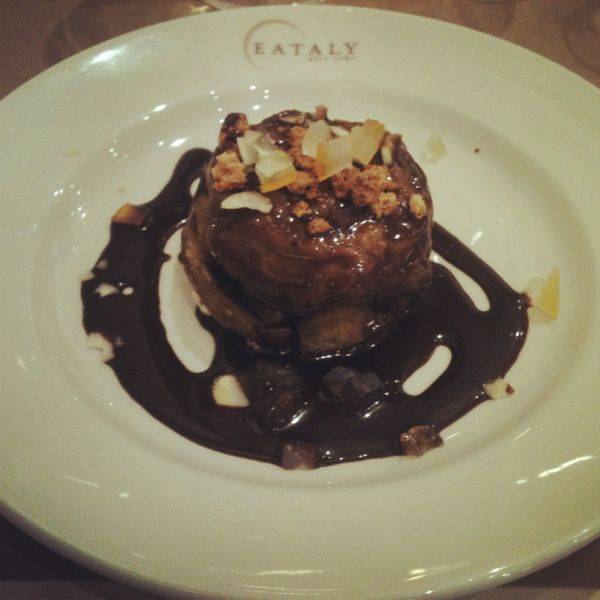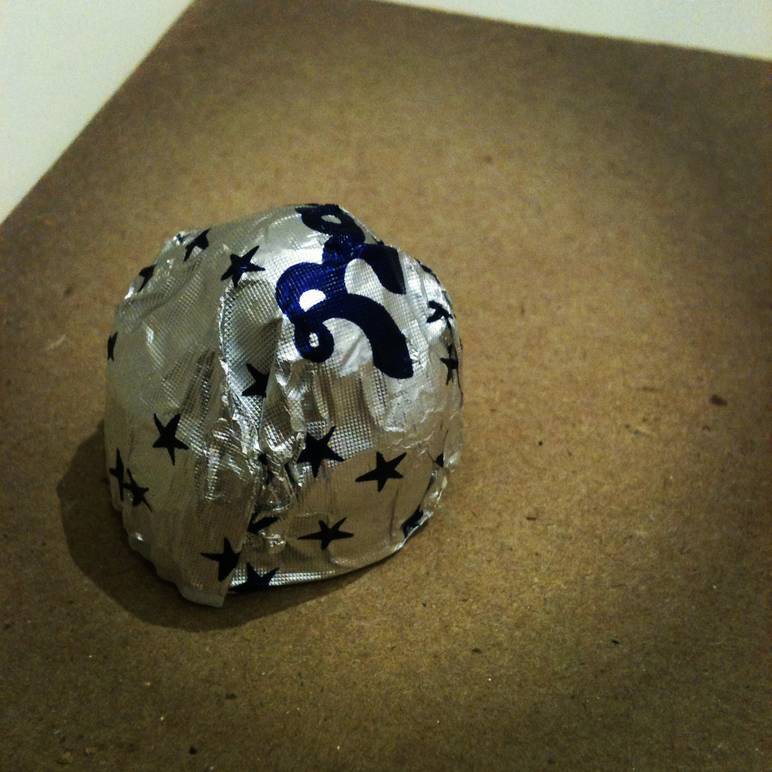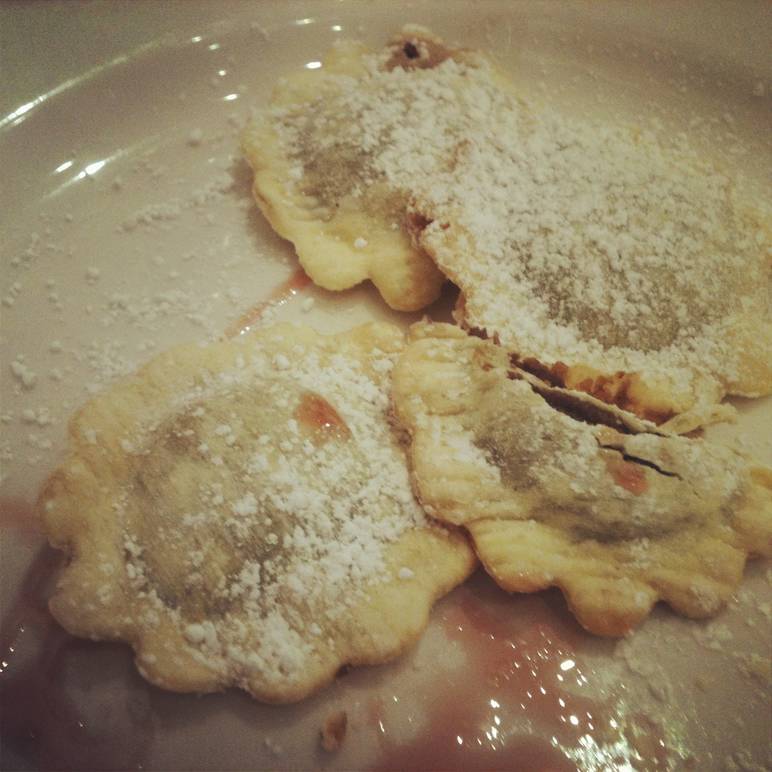Sweet and Savory: The Art of Cooking with Chocolate
Nothing speaks of holidays more than chocolate and just a few days before Thanksgiving, Italy's premiere chocolate brand, Perugina, organized a special chocolate class at Eataly by the title Hip & Happening-Hot New Chocolate Dessert Trends from Italy hosted by chocolate expert, food historian and frequent traveler to Italy, Francine Segan.
“Chocolate is as much a science as it is an art,” Federico Giorgio Marrano, Perugina Export Manager for the US said, “and Francine has a passion for the process, from sharing her knowledge about the history of chocolate to the love affair at the heart of Baci's (Perugina's most popular confections where a dark chocolate exterior envelops a heart of gianduja sprinkled with chopped hazelnuts and topped with a whole hazelnut) creation.”
Ms. Segan was trained at the legendary Perugina Scuola del Cioccolato in the heart of Italy. She writes and lectures extensively on the subject, having delivered multiple presentations at the Smithsonian Institute in Washington, DC. Her classes and cooking demonstrations have also included appearances at the New York Chocolate Show, and The New York Times Travel Show. She specializes in writing about Italy and Italian food and wine. Indeed in December 2009 she was named USA “Ambassador” for Italian sweets by Associazione Indstrie Dolciarie Italiane (AIDI), Italy's national association of industrial confectioners.
The class was divided into two parts, first a presentation of chocolate and its history, followed by demos of a few of Ms. Segan's recipes that pair chocolate with unexpected ingredients: yes, chocolate is such a versatile treasure that can be enjoyed not just with sweets but even with vegetables and pasta... stay tuned! more to come...first some of its history.
“The tasty secret of the cacao tree was discovered 2,000 years ago in the tropical rainforests of the Americas. The pods of this tree contain seeds that can be processed into chocolate. The story of how chocolate grew from a local Mesoamerican beverage into a global sweet encompasses many cultures and continents.
The first people known to have made chocolate were the ancient cultures of Mexico and Central America. These people, including the Maya and Aztec, mixed ground cacao seeds with various seasonings to make a spicy, frothy drink. Chocolate also played a special role in royal and religious events. Priests presented cacao seeds as offerings to the gods and served chocolate drinks during sacred ceremonies.
Later, the Spanish conquistadors brought the seeds back home to Spain, where new recipes were created. Eventually, the drink’s popularity spread throughout Europe. Since then, new technologies and innovations have changed the texture and taste of chocolate, but it still remains one of the world’s favorite flavors.” (The Field Museum, Chicago)
Rumors about chocolate spread throughout Europe in the 17th century by Italian and French merchants. “Italian chocolatiers, transformed making chocolate into an art form and during this time, gianduja (hazelnut paste) was invented and it became a popular sweet chocolate variation,” Ms Segan said, “They invented a fourth kind of chocolate (preceded by dark unsweetened, bittersweet and milk chocolate) but gianduja is not seen as a fourth flavor here in the US, although my mission is to change this and educate us.”
“Italians were also the first to pair chocolate with savory ingredients, not just sweets,” Ms Segan explained in the introduction to the demo part of the class.
The menu featured Melanzane al Cioccolato (Chocolate Eggplant), Ravioli di Cioccolato e Ceci (Sweet Chickpea Baked Ravioli), Torta di Baci e Vermicelli (Baci Pasta Cake) and Liquore ai Baci (Baci Liqueur).
“Popular throughout the Amalfi Coast during the spring and summer, Melanzane al Cioccolato is always served on August 15th to celebrate Ferragosto. The eggplant plays nicely against the sweet ricotta filling and dark chocolate sauce. Melanzane al Cioccolato is prepared in dozens of ways in Italy, although it is traditionally fried, more and more Italian chefs and cooks are making lighter versions by baking, broiling, grilling and even poaching the eggplant,” Ms Segan explained as students were served a delicious tasting featuring the eggplant in its fried version. “Chickpeas aren't a typical dessert ingredient but sure should be! Pureed they are velvety on the tongue and add a pleasant denseness,” she added while introducing irresistible bundles of sweet crisp dough filled with mashed chickpeas, chocolate and jam.
The next course featured thin vermicelli or angel hair pasta to make a dense and moist cake. “Unlike noodles, when thin pasta bakes, it melts into a lush mass of creamy sweetness. The Baci add pleasing hazelnut crunch and chocolate goodness to each slice.”
The liqueur served at the end was basically a Bacio in a shot glass... the famous chocolates can be dissolved in grappa, vodka or brandy. “I figured that out during a dinner party,” Ms. Segan explained, “As glasses were being passed around, one of my guests accidentally dropped a Bacio into a glass of grappa. The morning after, when I was cleaning up, I realized the chocolate had dissolved and transformed into a delicious cream. Then I started to experiment and try all different sorts of liqueurs.” The concoction can be ready in a couple of weeks, stored into an airtight glass container and given as a gift... what better moment than the holiday season? (For a cup of grappa or vodka, Ms Segan suggests using 4 Baci, ½ cup of milk and ¼ of sugar. But she thinks people should adjust quantities as they prefer).
-----
The class was part of a series of seminars to be held at Eataly during the month of December (Friday, December 14 from 6.30 to 8.00 pm; Saturday, December 15, 2.00 to 5.00 pm). During classes participants will create their own Baci confections.








































i-Italy
Facebook
Google+
This work may not be reproduced, in whole or in part, without prior written permission.
Questo lavoro non può essere riprodotto, in tutto o in parte, senza permesso scritto.